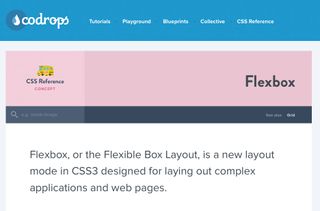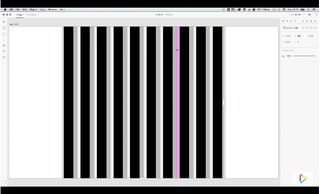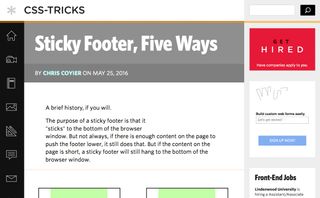Responsive design is easier than ever to implement these days as there are so many great tools to help you. Here’s our roundup of some of the best resources that will guide you in making your websites work well and look great on any device.
01. Codrops Flexbox reference

This complete guide to Flexbox is written by Sara Soueidan, an author who is renowned for her ability to explain concepts in a way that’s easy to follow without scrimping on detail. The Codrops guide is regularly updated so it’s a great resource to return to when you need it.
02. Stacks: Flexbox for Sketch

Stacks, part of the Auto Layout plugin, provide a way for you to use Flexbox technology within Sketch, without using CSS. This article explains how you can make use of this powerful technique for easy responsive design.
03. A crash course in technical RWD

Writing on the Treehouse blog, Jerry Cao has condensed a lot of useful information into a relatively short, readable article.
04. Create flexible layouts with Susy and Breakpoint

If you don’t want to use a framework to build your responsive site, these Sass extensions are a nice alternative, each with their own strengths. They’ll take care of the responsive maths for you so you can focus on design.
05. How to create responsive guides in Adobe XD

If you’re keen to try out Adobe Experience Design, here’s a good tutorial to get you started. It includes a video demonstration which takes you through every click of the process.
06. The web designer’s guide to Flexbox

Have you started using Flexbox yet? In this tutorial Wes Bos provides a comprehensive guide to the core concepts that will give you a solid understanding of everything you need to get to grips with this powerful tool.
07. CSS at BBC Sport

This isn’t a tutorial per se, but there’s a lot of learning here. In this post, the first of a two-part series, frontend developer Shaun Bent takes us on a detailed tour of how CSS is done at BBC Sport. They’ve managed to keep the CSS foundation of this massive site under 9kb, and it’s fascinating to see how that’s been done.
08. Sticky footer, five ways

Sticky footer… that should be simple enough, right? Unfortunately not. It can be trickier than you might expect to get that footer in the right place on every device. Luckily Chris Coyier has put together five tricks that will help you to make it happen using calc(), Flexbox, negative margins and Grid.
09. Adapting to input

Responsive design isn’t just about making your page display properly on any device, you also have to make it function well – and that means it has to be good at accepting input in a world where desktops have touchscreens and phones have keyboards. This article by Jason Grigsby of Cloud Four has some sound advice.
10. Our best practices are killing mobile web performance

Applied without consideration, certain best practices that were conceived during the desktop era may have a detrimental effect on mobile web performance. This article will make you think more deeply about how you get your site to work well on mobile.



























